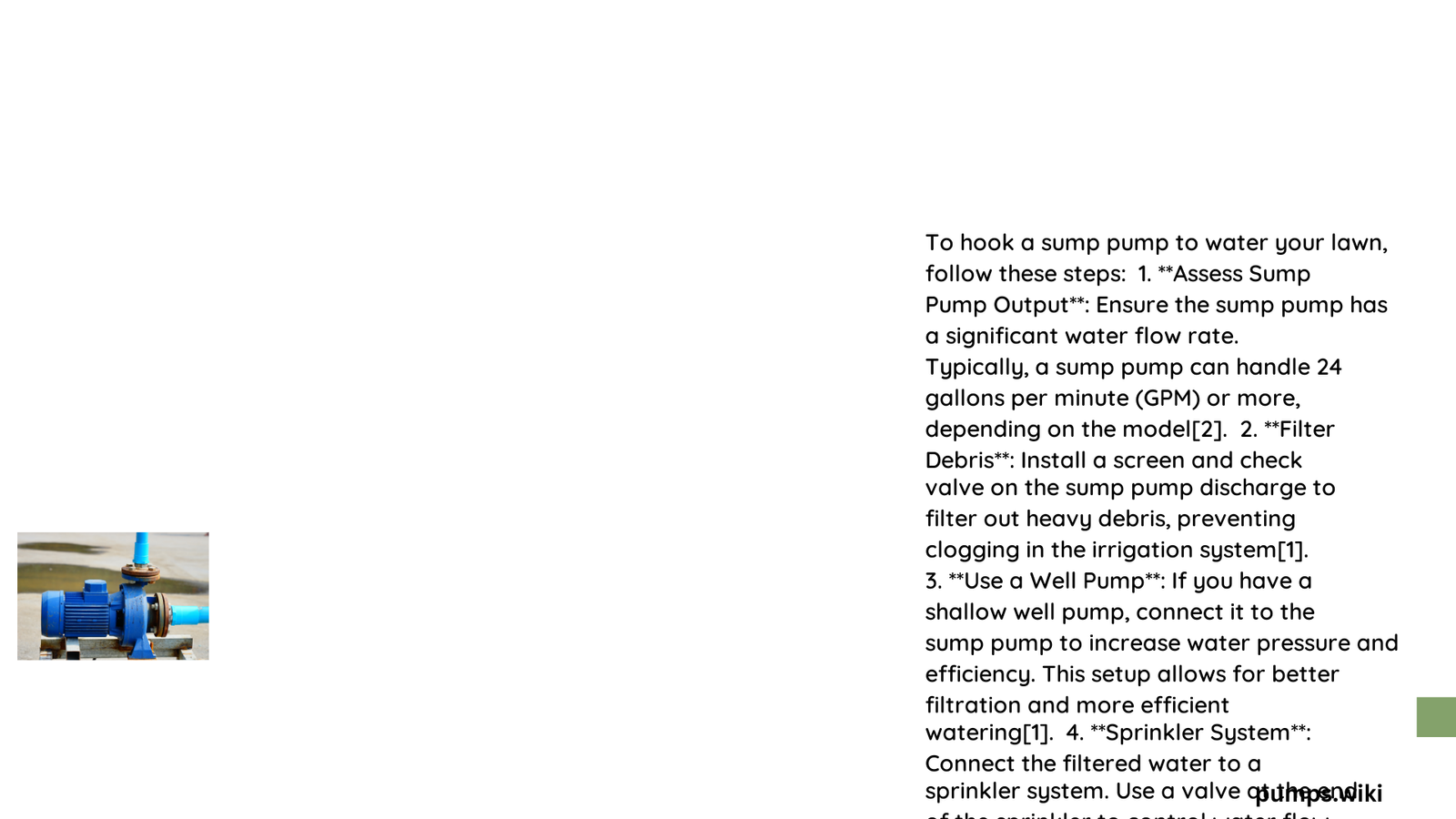Transforming a basement water management tool into a lawn irrigation solution requires strategic planning and precise technical execution. Homeowners seeking cost-effective water distribution methods can repurpose their sump pump to efficiently water landscapes, reducing water bills and utilizing excess groundwater. This comprehensive guide explores the intricate process of converting a sump pump into a lawn watering system, addressing potential challenges and providing expert-level insights for successful implementation.
What Materials Are Required for Hooking Sump Pump to Lawn?
Essential Equipment Checklist
- Sump pump (submersible or pedestal)
- PVC piping (1.5-2 inch diameter)
- Check valve
- PVC primer and solvent
- Pipe fittings
- Corrugated drainage pipe
- Silicone sealant
- Garden hose adapters
| Equipment | Recommended Specifications | Estimated Cost |
|---|---|---|
| Sump Pump | 1/3 to 1 HP | $100-$300 |
| PVC Piping | 1.5-2 inch | $20-$50 |
| Check Valve | Brass or PVC | $15-$30 |
How Do You Connect Sump Pump to Lawn Irrigation System?

Step-by-Step Connection Process
- Prepare Sump Pump Location
- Select lowest ground point in yard
- Ensure stable, level surface
-
Clear debris and potential obstructions
-
Install Discharge Piping
- Attach PVC pipe to pump outlet
- Apply PVC primer and solvent
- Install check valve to prevent backflow
-
Create weep hole for drainage
-
Route Piping Externally
- Drill wall penetration
- Seal external opening with silicone
- Use J-hooks for pipe support
- Ensure gradual downward slope
What Challenges Might You Encounter?
Potential Technical Limitations
Repurposing a sump pump for lawn irrigation presents several technical challenges:
- Water Pressure Constraints
Sump pumps are not designed for consistent lawn irrigation, potentially causing: - Inconsistent water distribution
- Potential pump motor strain
-
Reduced equipment lifespan
-
Flow Rate Limitations
Most residential sump pumps provide: - 2,000-5,000 gallons per hour
- Insufficient for large lawn areas
- Uneven water coverage
What Maintenance Considerations Exist?
Recommended Maintenance Practices
- Regular pump inspection
- Clean intake screens
- Check electrical connections
- Monitor water quality
- Lubricate moving parts
- Winterize during cold seasons
Pro Tips for Successful Implementation
Expert Recommendations
- Use high-quality, corrosion-resistant materials
- Install water filtration system
- Consider backup power source
- Monitor pump performance quarterly
- Consult local water management regulations
Recommended Pump Models
- Zoeller M53 Mighty-Mate
- Wayne CDU790
- Superior Pump 92341
Cost Analysis
| Expense Category | Estimated Range |
|---|---|
| Initial Setup | $250-$500 |
| Annual Maintenance | $50-$150 |
| Potential Water Savings | $100-$300/year |
Safety Precautions
- Ensure proper electrical grounding
- Use waterproof connections
- Avoid direct contact with pump during operation
- Install ground fault circuit interrupter (GFCI)
Final Considerations
Hooking a sump pump to water lawn requires technical expertise, careful planning, and ongoing maintenance. While possible, homeowners should evaluate their specific landscape needs and pump capabilities before implementation.
